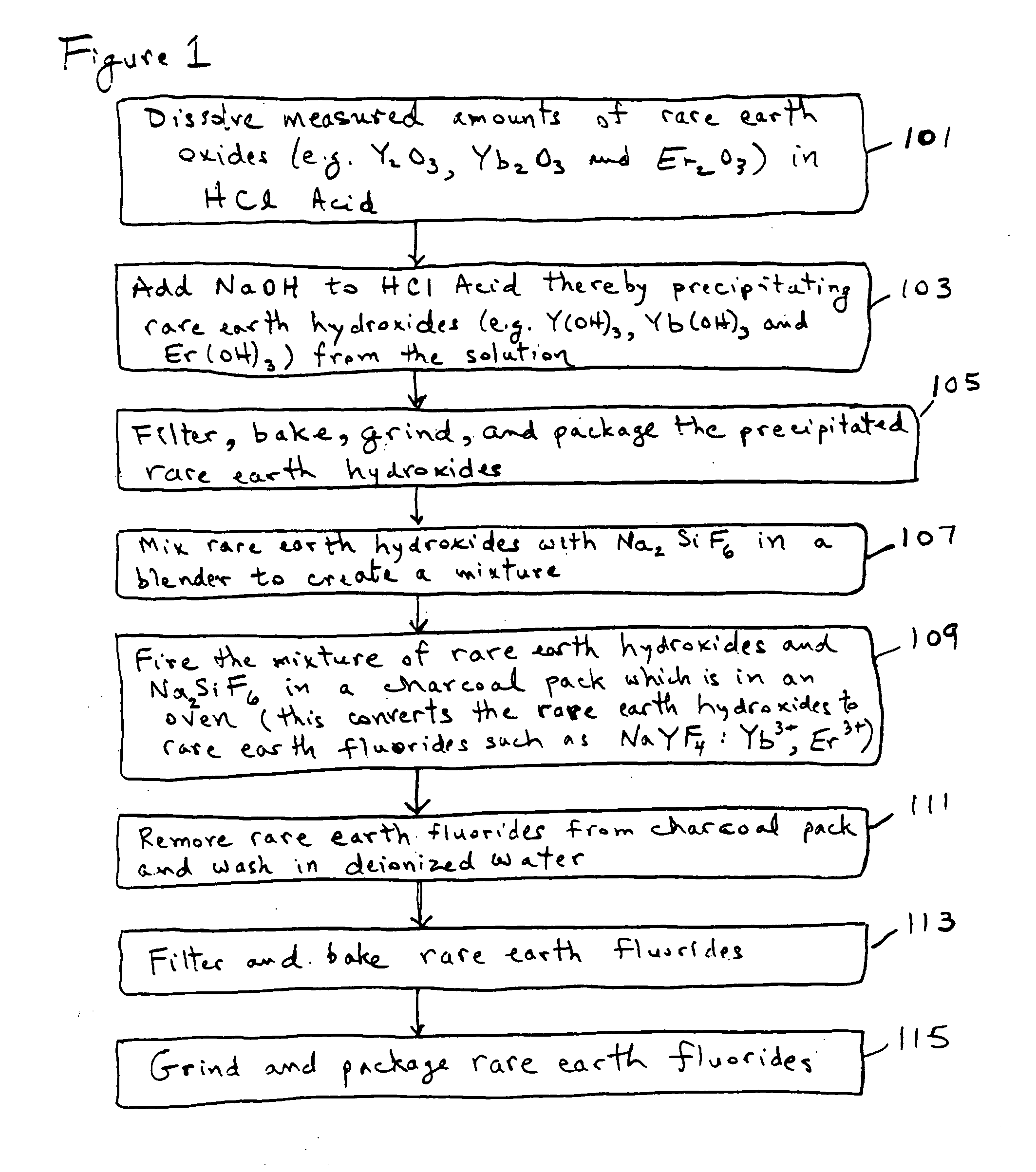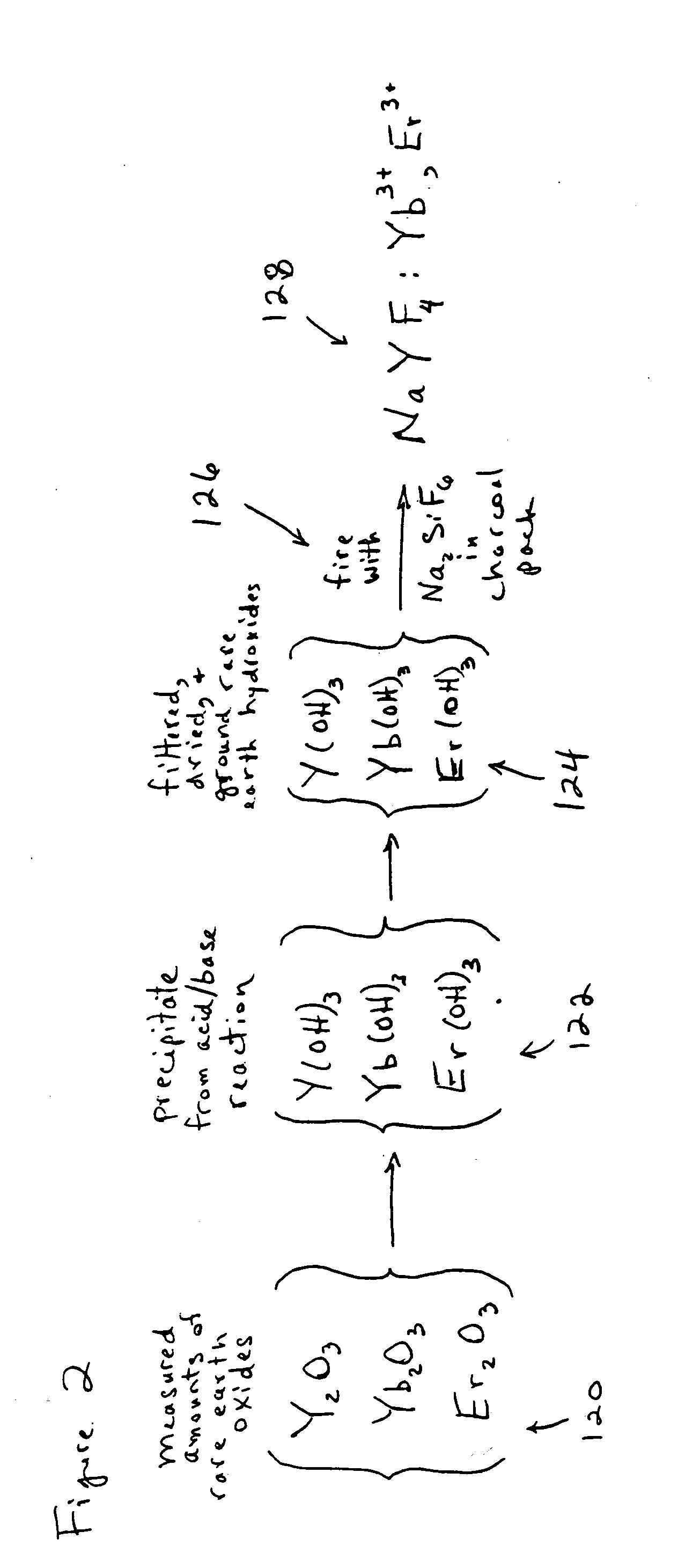Process and Composition for Making Rare Earth Doped Particles and Methods of Using Them
- Summary
- Abstract
- Description
- Claims
- Application Information
AI Technical Summary
Benefits of technology
Problems solved by technology
Method used
Image
Examples
Embodiment Construction
[0053]The following discussion sets out specific details about certain embodiments. It will be appreciated that alternative embodiments and implementations may use different starting materials or use different process operations or delete certain process operations or perform certain process operations in a different sequence.
[0054]An exemplary method is shown in the flowchart which is labeled as FIG. 1. FIG. 2 is a chemical flowchart which shows the chemical reactions involved in an exemplary implementation of the method depicted in FIG. 1. The method of FIG. 1 may begin in operation 101, in which certain measured amounts of selected rare earth oxides (e.g. Y2O3, Yb2O3, and Er2O3) are dissolved into hydrochloric acid (HCl). In one embodiment for producing an upconverting phosphor, it is desirable to produce a final composition of NaYF4:Yb3+, Er3+ in which the molar percentages of Y, Yb and Er are about 80%, 18% and 2% respectively. These percentages are produced in the first exampl...
PUM
 Login to View More
Login to View More Abstract
Description
Claims
Application Information
 Login to View More
Login to View More - R&D
- Intellectual Property
- Life Sciences
- Materials
- Tech Scout
- Unparalleled Data Quality
- Higher Quality Content
- 60% Fewer Hallucinations
Browse by: Latest US Patents, China's latest patents, Technical Efficacy Thesaurus, Application Domain, Technology Topic, Popular Technical Reports.
© 2025 PatSnap. All rights reserved.Legal|Privacy policy|Modern Slavery Act Transparency Statement|Sitemap|About US| Contact US: help@patsnap.com



